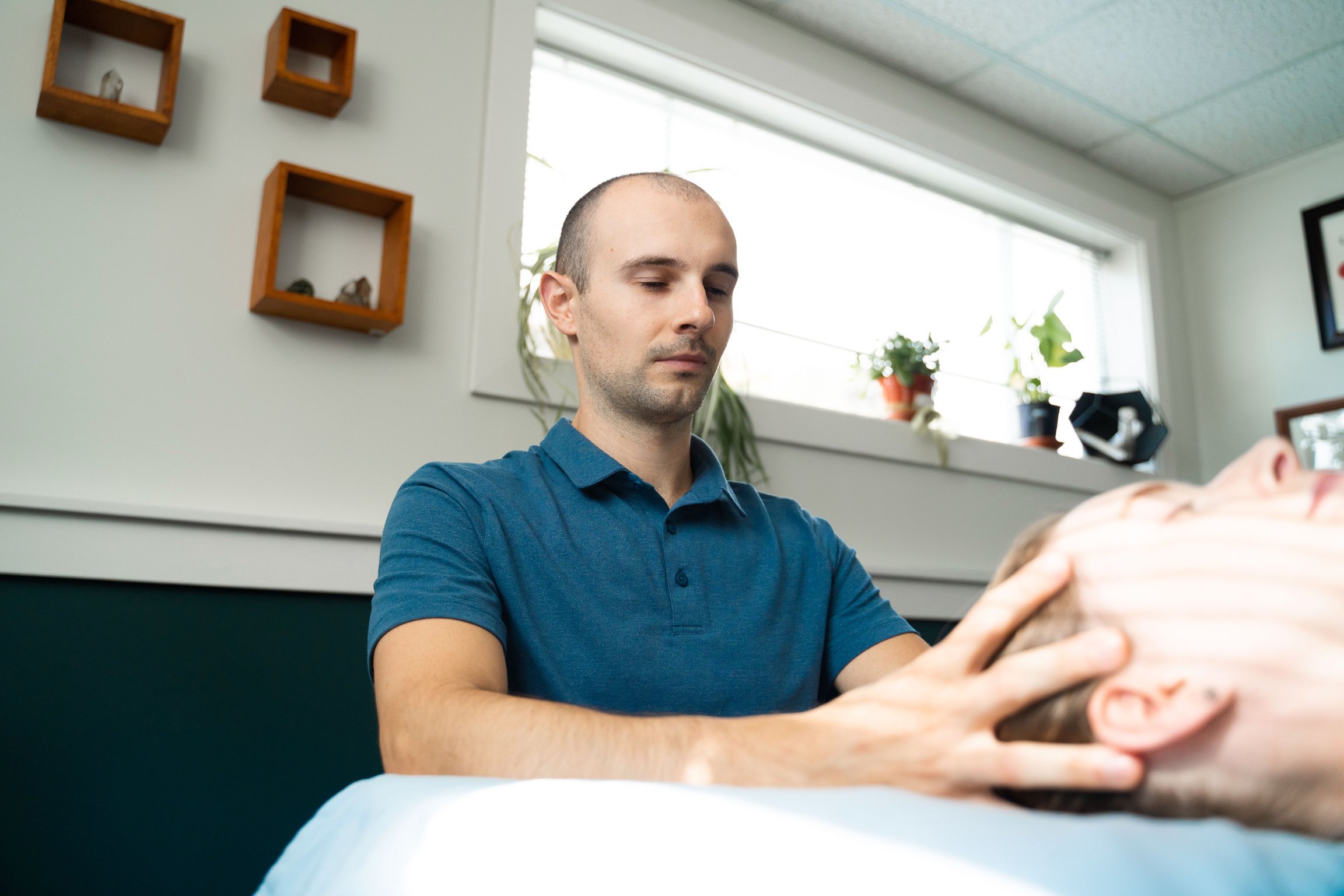
osteopathy
What is OSTEOPATHY?
Osteopathic Practitioners use skilled palpation and a variety of manual therapy techniques to influence muscles, joints, nerves, connective tissue, circulation and internal organs. Some commonly used techniques include:
Visceral mobilization
Muscle energy
Osteoarticular adjustment
Cranio-sacral therapy
Realignment of joints
Myofascial release
Osteopathic Practitioners treat people of all ages, from newborns to seniors and can help if you are experiencing problems such as:
Neck and back pain and tension
Headaches
Sleep or energy issues
Sports injuries
Concussion
Injuries from car accidents
Repetitive strain injuries
Joint or muscle pain
Digestive, respiratory or menstrual problems
Pre and post-natal support
Jaw dysfunction
How to choose an Osteopathic Practitioner
Osteopathy, as practiced by Osteopathic Practitioners is not a regulated health profession in BC; therefore, use of title does not convey training standards, like it does in many health professions.
It’s important to choose an Osteopathic Practitioner that is a member of an organization that maintains high standards, such as OsteopathyBC and the member organizations of the Canadian Federation of Osteopaths. Yes, our osteopathic practitioners are members of Osteopathy BC.
Does my extended health cover osteopathy?
Osteopathy is in the private sector and it is fee for service. MSP does not cover osteopathy. However, most major providers of extended health insurance have an established relationship with OsteopathyBC and accept our members as qualified providers. You must consult your specific plan for details.
How Does Manual Osteopathy Differ from Osteopathic Medicine?
When completing a google search for Osteopath Victoria, BC, or for osteopath langford, you will come across a variety of results. Some practitioners have a DOMP title, and some may have a D.O. title.
The Osteopathic International Alliance (OIA) recognizes internationally that there are two streams of osteopathic practice. Osteopathy practiced by osteopaths, and osteopathic medicine practiced by osteopathic physicians (DO).
The majority of countries in the world and the majority of osteopaths in Canada use these internationally accepted titles and definitions. Unfortunately, British Columbia is out of step with these standards and the titles “Osteopath” and “Osteopathic Physician” are currently reserved for osteopathic physicians here.
Members of Osteopathy BC therefore use the title ‘Osteopathic Practitioner” in British Columbia to make it very clear that we are not physicians and to conform with the law.
Visit www.osteopathybc.ca for more information about Osteopathic Manual Practice.
Frequently Asked Questions
Q: How does osteopathy differ from chiropractic care?
A: While both osteopathy and chiropractic care involve manual techniques for treating musculoskeletal issues, they have different underlying philosophies and approaches. Osteopathy tends to focus on the body as a whole, including the musculoskeletal system, while chiropractic care often emphasizes spinal adjustments as a central treatment modality.
Q: Is osteopathy suitable for everyone?
A: Osteopathy is generally safe for people of all ages, from infants to the elderly. However, certain medical conditions or circumstances may require caution or modifications in treatment approach. It's essential to consult with a qualified osteopath to determine if it's appropriate for your specific situation.
Q: How long does an osteopathic treatment session typically last?
A: The duration of an osteopathic treatment session can vary depending on the individual's condition and needs, but it usually lasts between 45 to 60 minutes. During the session, the osteopath will assess the patient's condition, perform manual techniques, and provide advice on exercises or lifestyle modifications to support recovery.
Q: Can osteopathy help with neck pain and stiffness?
A: Yes, osteopathy effectively treats neck pain and stiffness from multiple different causes. However with the neck being very adaptable, neck relief may take a few sessions to treat depending on a variety of factors.
Q: How does osteopathy treat sports injuries like sprains and strains?
A: Osteopaths use hands-on techniques to address soft tissue restrictions, restore joint mobility, and incorporate rehabilitative exercises for sports injuries, helping athletes recover faster with reduced risk of reinjury.
Q: Can Osteopathy Help Treat Carpel Tunnel Syndrome?
A: Yes, osteopathy provides relief for repetitive strain injuries like carpal tunnel syndrome by releasing muscle tension, mobilizing joints, improving circulation. Osteopathy offers a range of gentle, hands-on techniques designed to relieve pressure on the median nerve, improve wrist mobility, and restore balance to the surrounding structures. These techniques may include:
Soft Tissue Manipulation: By releasing tension in the muscles and connective tissues surrounding the wrist and forearm, osteopathic practitioners can alleviate pressure on the median nerve and reduce symptoms of CTS.
Joint Mobilization: Gentle manipulation of the wrist and hand joints can help restore proper alignment and mobility, reducing inflammation and promoting healing.
Nerve Mobilization: Specific techniques aimed at mobilizing the median nerve can help alleviate compression and improve nerve function, providing relief from symptoms of CTS.
Postural Influences: Osteopaths also address contributing factors from other parts of the body that could be causing biomechanical imbalances, which may exacerbate symptoms of CTS. By correcting these issues, they can help prevent recurrence and promote long-term relief.
Q: Can Osteopathy help with digestive issues?
A: Yes, digestive disturbances can stem from a decrease of blood flow to the small intestine from excess tension in the visceral system. In addition, this tension can also create low back pain.
Q: Can Osteopathy help with Migraines?
A: Yes, there a few ways in which Osteopathy can help with migraines. Patients can expect a change in symptoms generally within 3-7 sessions. Some take less time to notice relief.
Modulation of Nervous System Activity: OMT may help reduce tension and stress in the musculoskeletal system, thereby decreasing the frequency and intensity of migraine attacks.
Improvement in Blood Flow and Lymphatic Drainage: By enhancing circulation, OMT can reduce inflammation and promote the elimination of waste products that may contribute to migraine pathophysiology.
Reduction of Muscle Tension and Pain: Techniques such as myofascial release can alleviate muscle tension in areas commonly associated with migraine pain, such as the neck and shoulders.






